On February 12, Chicago’s Joffrey Ballet premiered a quintuple bill program for the third instalment of their 2019/20 season at the Auditorium Theatre. In program notes, the ballet’s Artistic Director and recently appointed Member of the Most Excellent Order of the British Empire Ashley Wheater said that the series of short choreographies “captures the spirit of the Joffrey today,” as all five works featured were “created by still-active and vibrant choreographers.”
The evening’s program takes its name The Times Are Racing from the title of the closing piece, a work created for the New York City Ballet in 2017 by its Resident Choreographer and Artistic Advisor Justin Peck. The ballet for 20 dancers is arguably the most spirited and contemporary of the night, as it pays homage to popular dance and youth culture and the ability of both to literally and figuratively shake things up.
“The Times Are Racing” is Peck’s second collaboration with fashion designer Humberto Leon of Opening Ceremony, who clad dancers in high-top sneakers, crop tops, short shorts and oversized T-shirts that read “Defy,” “Act” and “Change.” The streetwear seemed to give the Joffrey’s dancers a sense of freedom and vivacity, as they jubilantly performed a choreography peppered with tap, breakdance and even very obvious elements from the choreographies in the film Flashdance. Even so, the ballet element is still present, as evidenced by a male duet that combined tap footwork with a beautifully extended leg and pointed foot and perfectly curved and positioned arm movements.
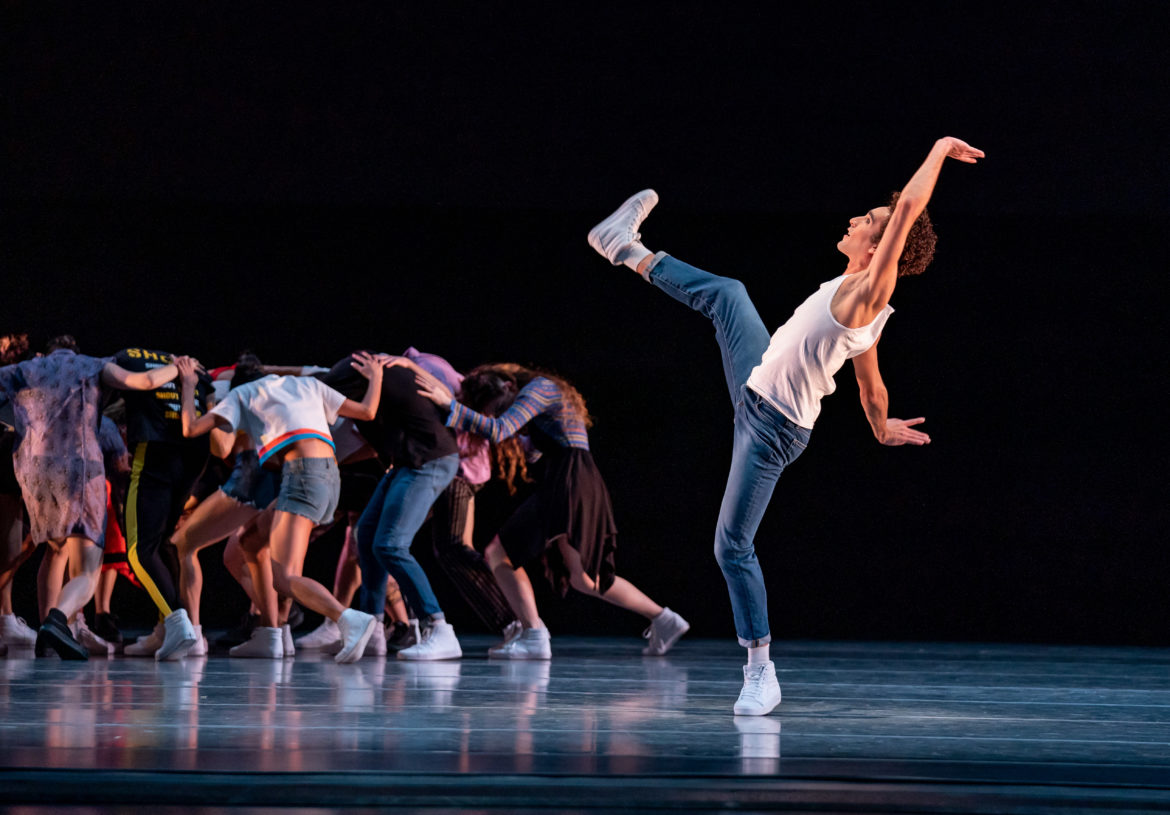
The evening’s opening work, “Commedia,” set to Stravinsky’s Pulcinella score, is choreographer Christopher Wheeldon’s harlequin-inspired piece that failed to bring the levity one would normally associate with this commedia dell’arte character. Wheeldon is a favorite in the Joffrey’s repertoire – especially after having choreographed the ballet’s sublime and now legendary “Nutcracker” – but this is not one of his strongest works, remaining rather ho-hum even when the accompanying music becomes most dynamic.
Although the choreography is ultimately what keeps “Commedia” from being an engaging work, Isabel Toledo’s costuming of white spandex unitards with black diamonds, capes and capelets of various unsavory colors and executioner scull caps slash eye masks created a cheap and off-putting aesthetic. This is difficult to share, especially as the evening’s performance was dedicated to Toledo’s life and legacy. Her husband Ruben Toledo’s backdrop with large, caricature-style masked harlequin faces also added to the work’s kitschy air.
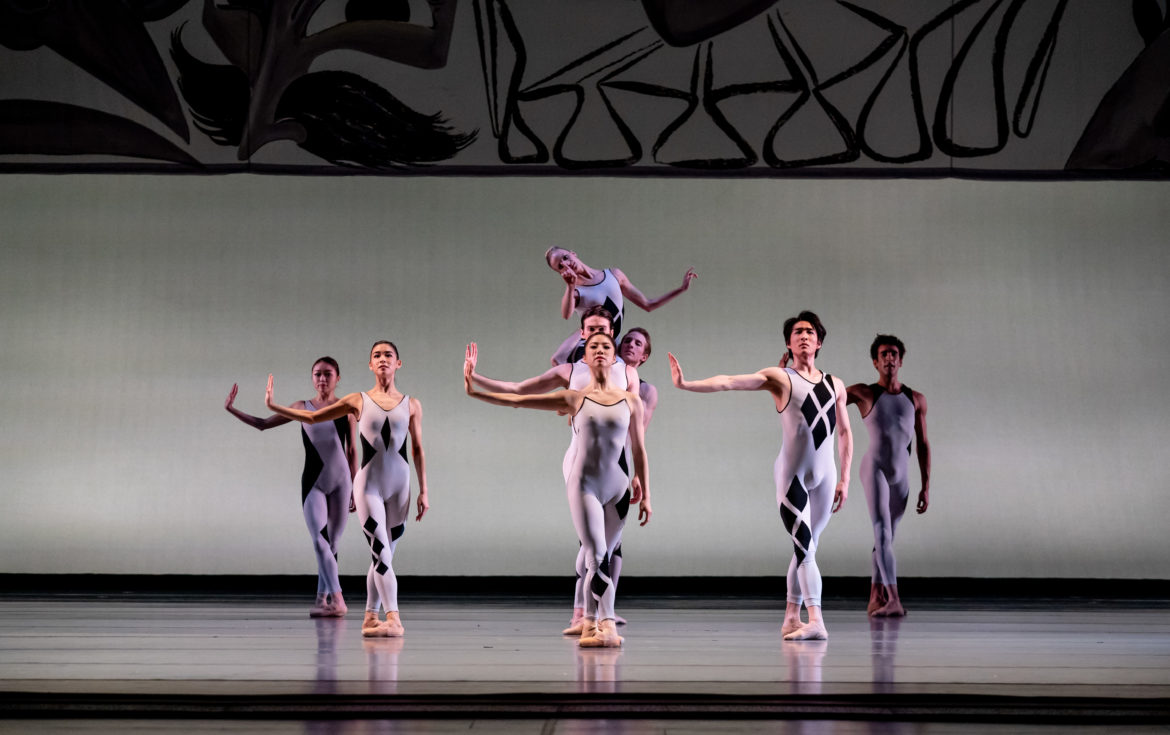
Chicago-based choreographer Stephanie Martinez’s piece Bliss! delved a bit deeper into the neoclassical ensemble style than Wheeldon’s piece and had some spectacular yet brief moments, especially in the duet starring Anais Bueno and Brooke Linford and the group piece in which Linford is lifted, spun and tossed with alarming precision and finesse. Commissioned by the Joffrey in 2019 for a Stravinsky evening with the Chicago Symphony Orchestra, the ballet as a whole was not terribly memorable, with most of the dance fading away by later in the evening.
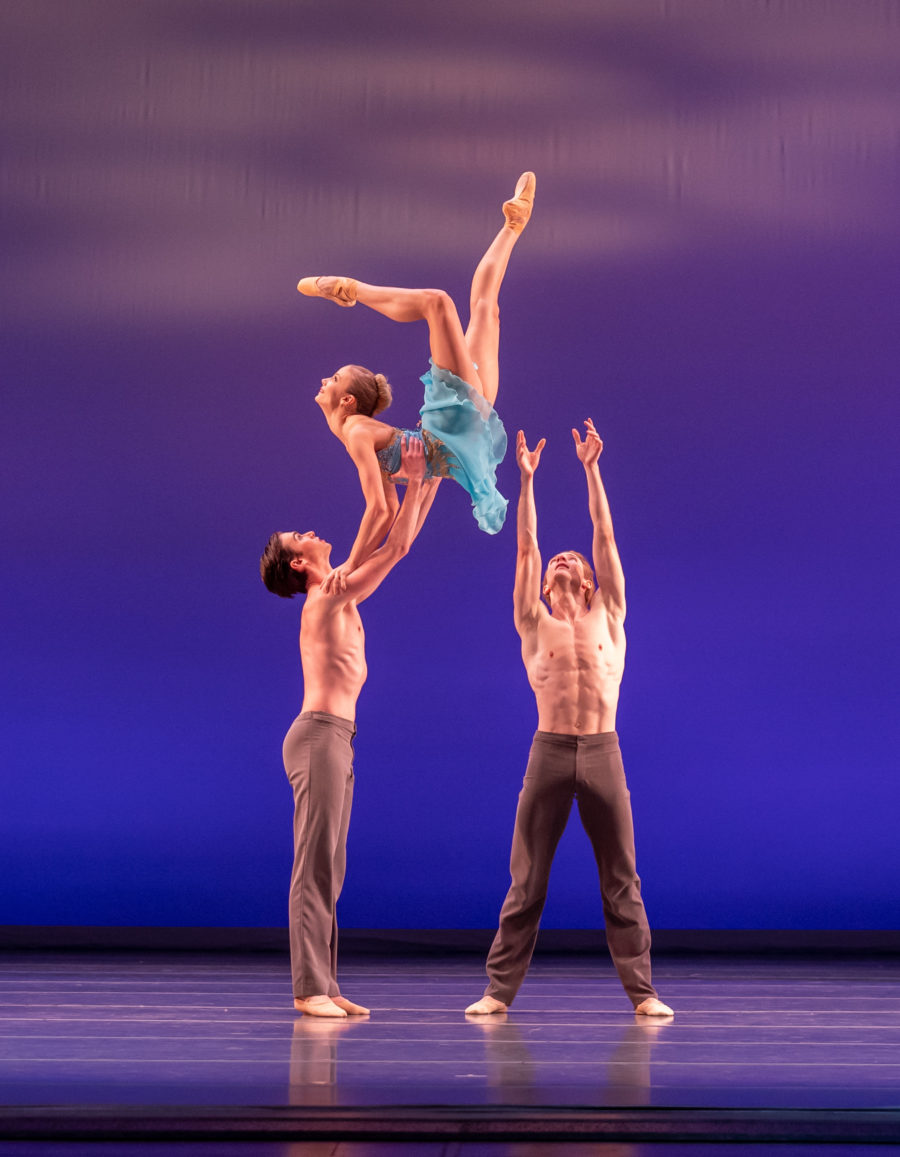
The best works of the night were without question those of Israeli choreographer Itzik Galili, who thrilled with two short ballets. The first, “Mono Lisa,” is a pas de deux danced to the sounds of a typewriter. Galili’s lighting aims to recreate the starkness of a factory, “filled with sounds and visions of iron and steel.” This imagery is heightened by Natasja Lansen’s rust-colored costumes. The bodies of the male and female dancers entwine, resist and work in tandem like cogs in a very fast, precise machine. The partner work in the piece is incredibly difficult, but when executed properly is spellbinding, like Stefan Goncalvez’s smooth, quick turns with Victoria Jaiani arms hooked over his as she clasps her legs into a v-formation. This is the type of ballet Jaiani was born to dance, yet she seemed low on energy and not as spine-tinglingly meticulous in her movement as I have always seen in the past.
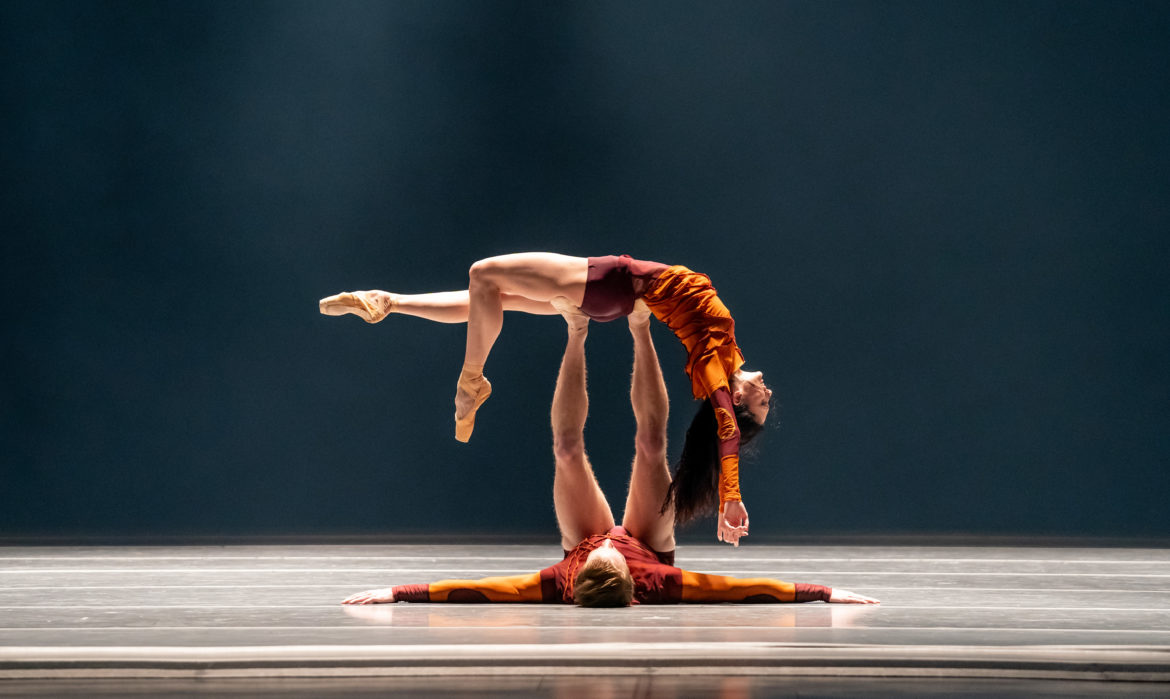
Galili’s second piece, “Sofa,” was clearly the audience’s favourite, not just because of its comic look at modern-day relationships and sexuality, but also because of the savagery of the movement and its strong narrative qualities. As Tom Waits begins to sing Nobody, an overturned sofa is snapped back into place by the tumbling bodies of a male and female dancer. The aggressive male, performed with full commitment by Temur Suluashvili, repeatedly tries to seduce the clearly uninterested female. The two dancers flip and pull each other’s bodies all over the couch, always narrowly missing one another by mere inches. Eventually,
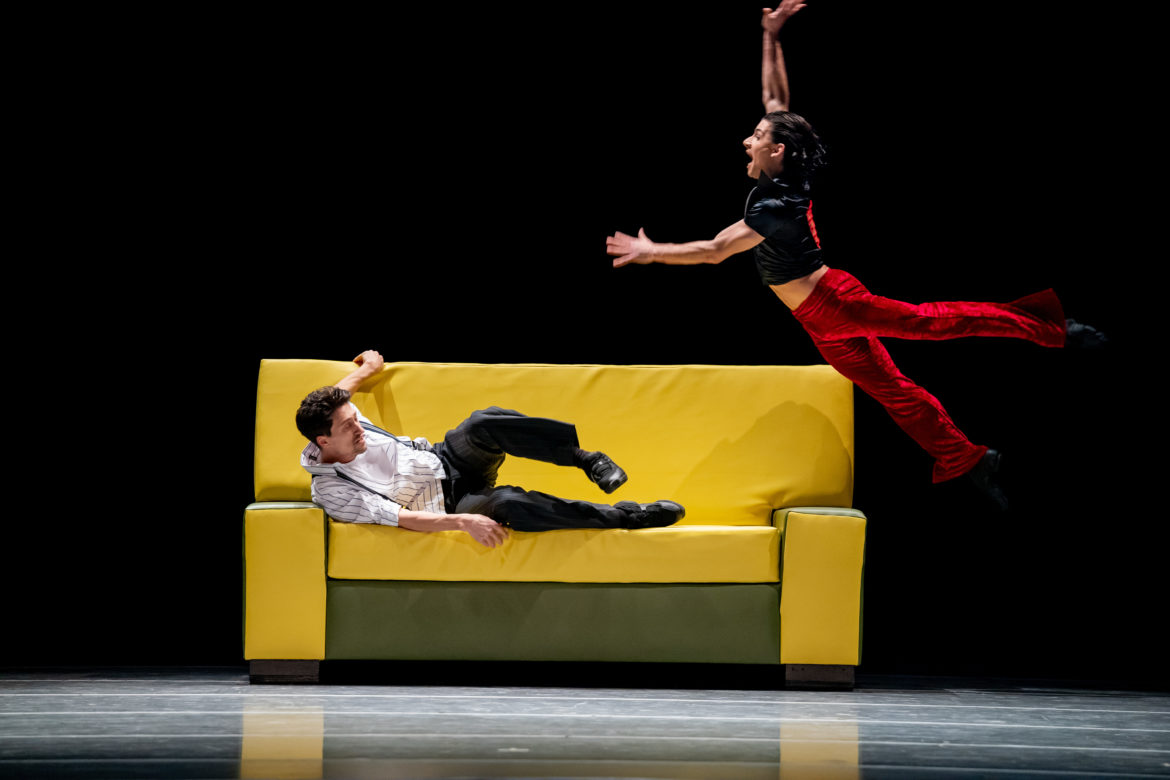
the sofa is flipped over, and when it’s slammed back into position the new body next to Suluashvili’s is that of another young man. The once aggressive male now becomes the defensive party, receiving his just deserts as he evades the interests of another man.
“Sofa” conveys a rich and entertaining story effortlessly and in a very short amount of time, but it’s the acting chops and the exactitude and rigor of movement of its three performers: Suluashvili, Anna Gerberish and the phenomenal Fernando Duarte that make it stand-up-and-clap spectacular.
The Joffrey Ballet’s The Times Are Racing runs through February 23, 2020.


